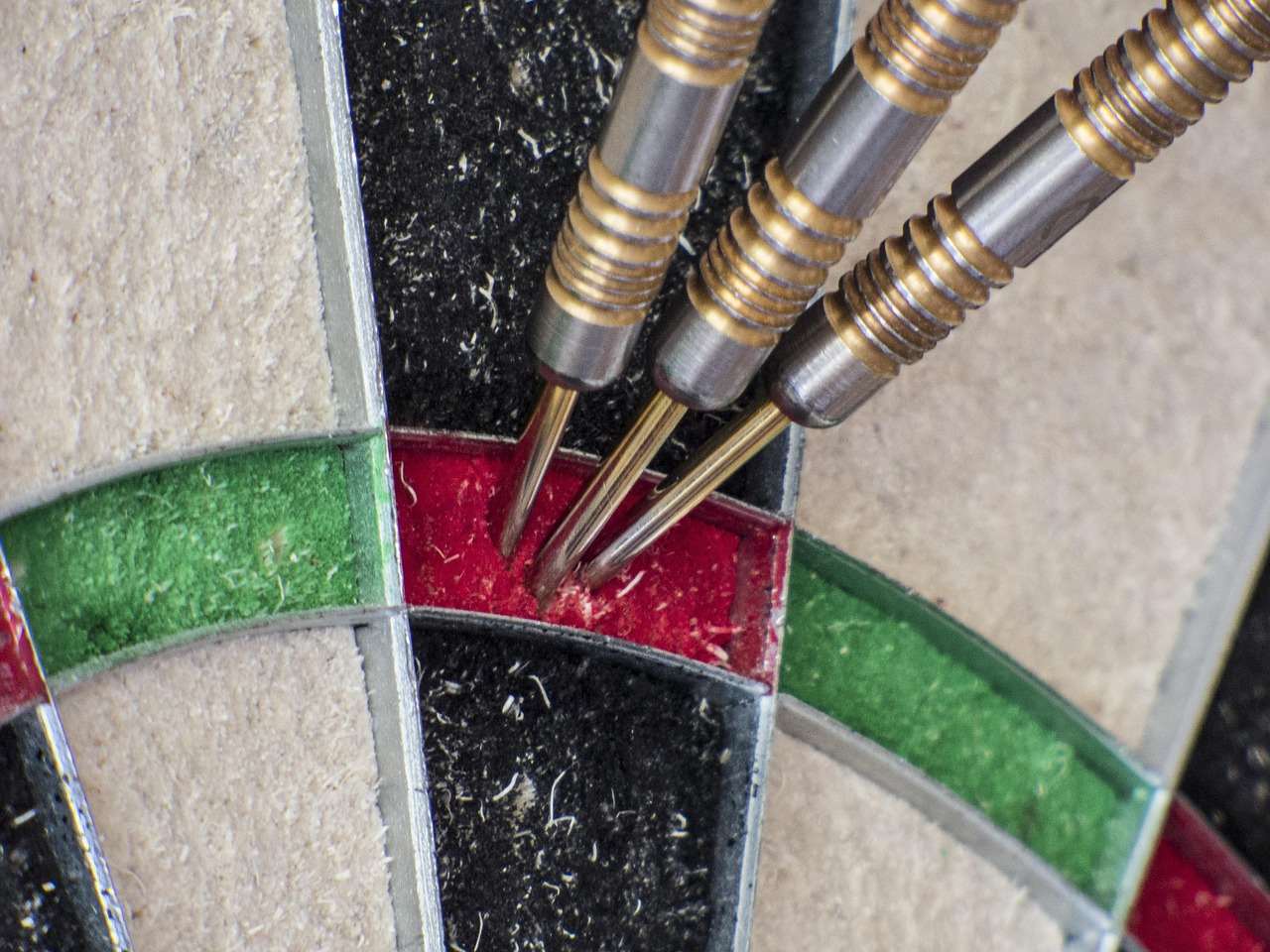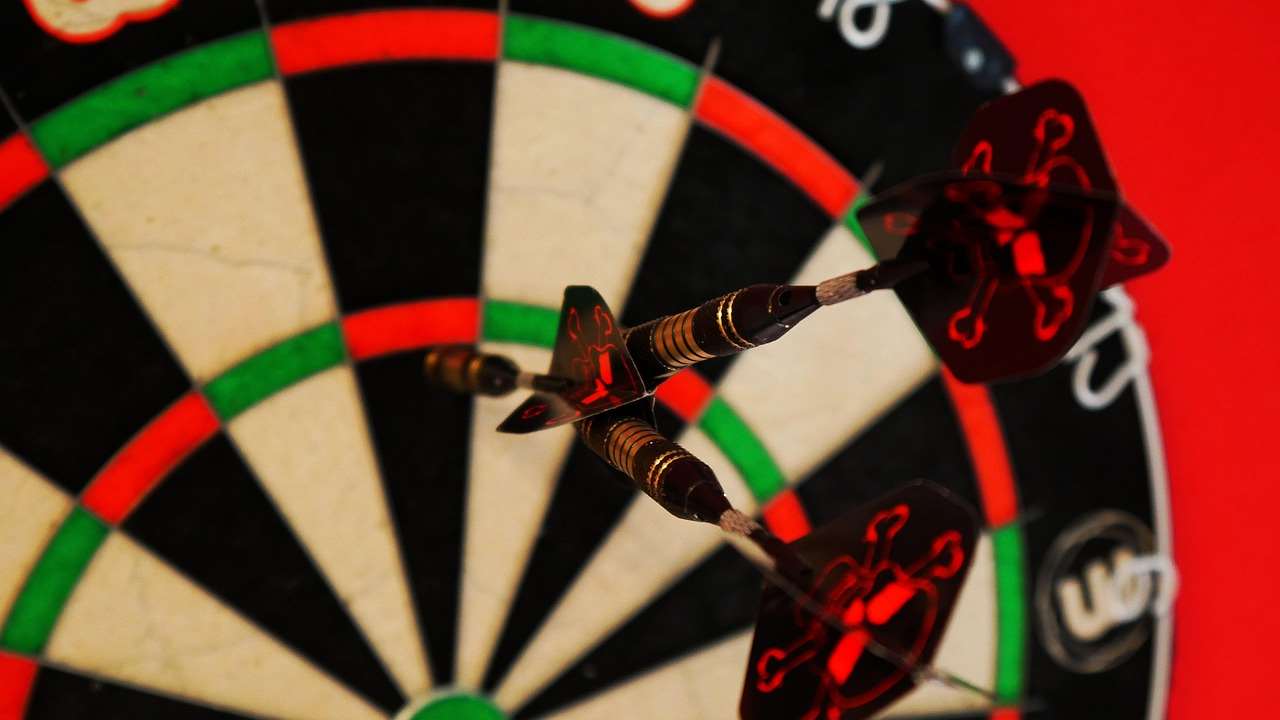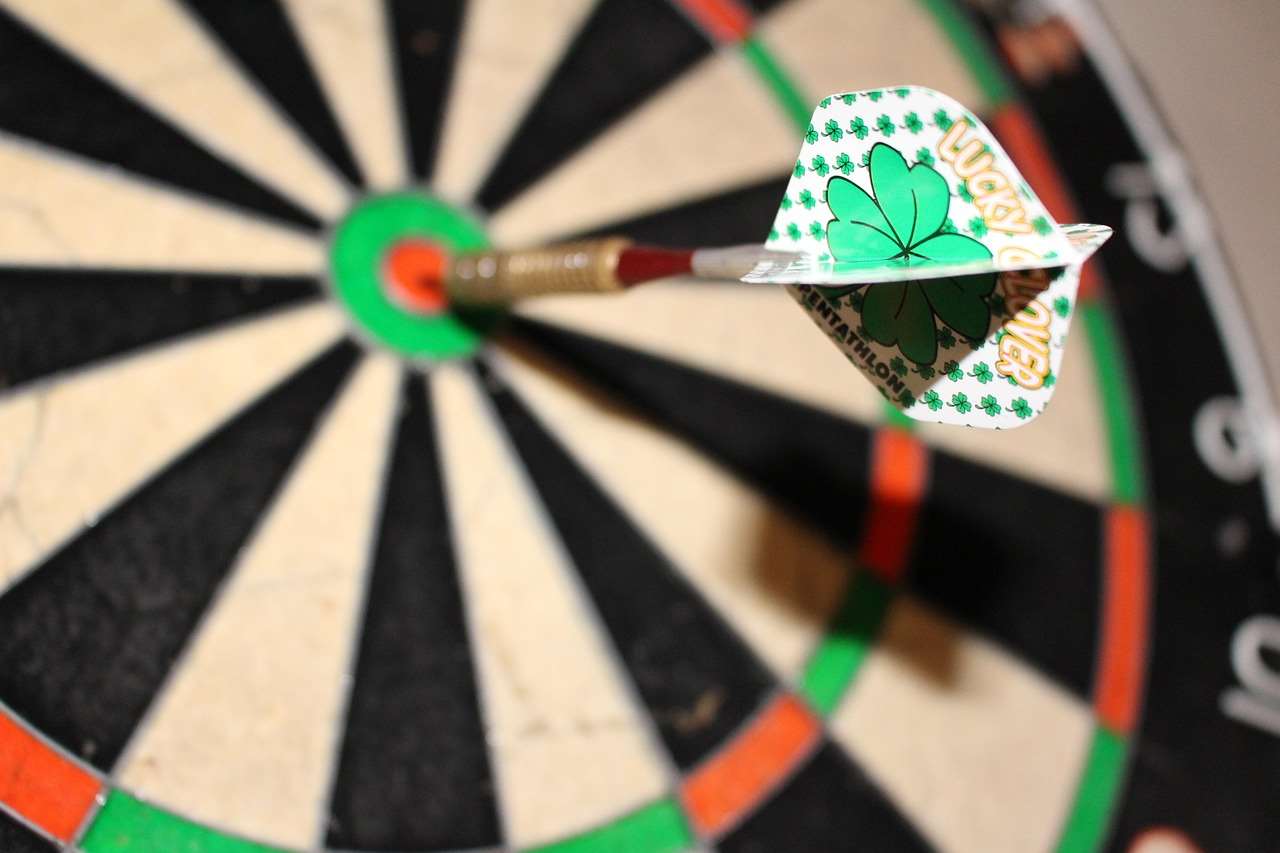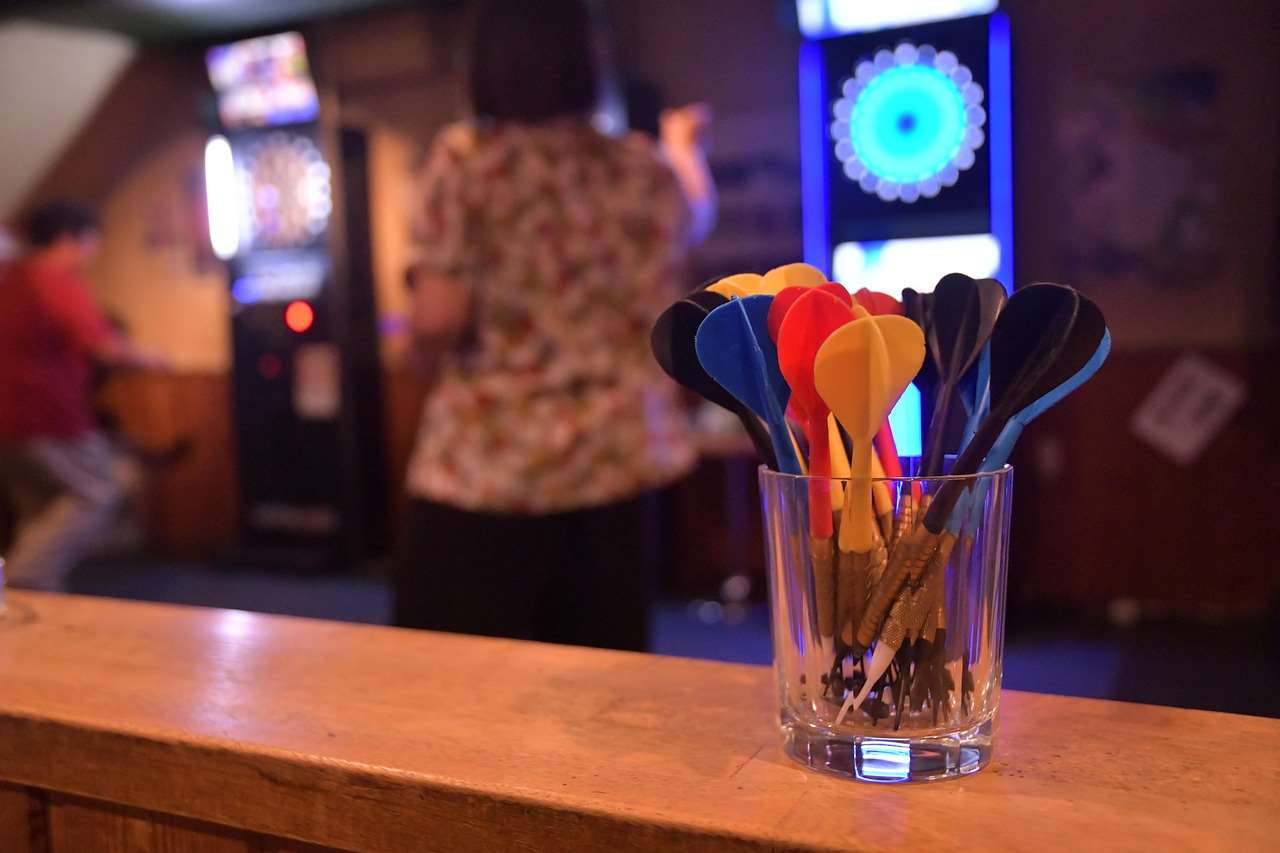The **darts score limit** in a standard game of 501 is, effectively, zero. You start with 501 points and must reach exactly zero to win, making sure to finish on a double. This article dives into the intricacies of scoring in darts, covering everything from basic rules to advanced strategies to help you improve your game.
⚠️ Still Using Pen & Paper (or a Chalkboard)?! ⚠️
Step into the future! The Dart Counter App handles all the scoring, suggests checkouts, and tracks your stats automatically. It's easier than you think!
Try the Smart Dart Counter App FREE!Ready for an upgrade? Click above!
Understanding the Basics of Darts Scoring
Darts scoring might seem straightforward at first, but there’s more to it than meets the eye. Knowing the rules inside and out is crucial for competitive play and for enjoying the game fully. Let’s break down the fundamentals, including understanding the dartboard layout and point values.
The Dartboard: A Quick Overview
The standard dartboard is divided into 20 numbered sections, each worth its face value. The outer ring is the double ring, doubling the value of the section it lands in. The inner ring is the treble ring, tripling the section’s value. The bullseye is divided into two parts: the outer bullseye is worth 25 points, and the inner bullseye (or “double bull”) is worth 50 points.

Calculating Your Score
Adding up your score is simple: just add the value of each dart thrown. For example, if you throw a dart into the treble 20 (T20), a single 5, and a double 10 (D10), your score for that round would be 60 (T20) + 5 + 20 (D10) = 85. It’s vital to keep track accurately, or consider using a Practice darts app with scoring for convenience.
The Starting Score: 501 and Beyond
While 501 is the most common starting score, other variations exist. 301 is a shorter game, often used for quicker matches. The choice of starting score affects the strategy and how quickly a game can be completed. Remember, regardless of the starting score, the darts score limit you are aiming for is ultimately zero.
The Importance of the Finish: Checking Out
Reaching zero isn’t enough; you must finish the game with a double or the bullseye. This is known as “checking out.” The checkout rule dramatically changes the strategy, especially as you approach the end of the game.
What is the Highest Possible Checkout?
The highest possible checkout in darts is 170. This is achieved by throwing a treble 20 (T20), another treble 20 (T20), and then the bullseye (50). Many players practice specific checkout combinations to improve their game.
Busting: When a Throw Doesn’t Count
If a throw brings your score to one, zero without a double, or below zero, it’s considered a “bust.” In this case, your score reverts to what it was at the start of that turn. Understanding busting is crucial for strategic play and avoiding costly errors. For example, aiming for a single 20 when you need 21 to win will result in a bust.
Common Checkout Combinations
Memorizing common checkout combinations is essential for competitive play. Some popular checkouts include:
- 40: Double 20
- 32: Double 16
- 50: Double Bullseye
- 81: T17, D15
- 100: T20, D20

Knowing these combinations can significantly improve your speed and accuracy when closing out a game. Remember to practice these regularly!
Strategic Play and the Darts Score Limit
Beyond the basic rules, strategic play involves maximizing your scoring potential and minimizing your opponent’s opportunities. This includes aiming for specific targets, playing percentages, and understanding your opponent’s strengths and weaknesses. A key aspect of strategy is understanding how the **darts score limit** affects your throw selection.
Maximizing Your Scoring Potential
For many players, aiming for the treble 20 (T20) is the primary scoring strategy, as it yields the highest possible score of 60 with a single dart. However, this isn’t always the best approach. Sometimes, aiming for the treble 19 (T19) or other high-scoring areas might be more strategic, especially if you’re not confident in hitting the T20 consistently.
Playing Percentages
Playing percentages involves choosing the target that gives you the best chance of scoring well, even if it’s not the absolute highest possible score. For example, if you’re slightly off your target, aiming for the T19 can be safer, as the surrounding numbers (7 and 3) are relatively low compared to the numbers around the 20 (1 and 5).
Mental Game and Pressure
The mental game is a critical part of darts. Staying calm under pressure, focusing on your technique, and visualizing success are essential for consistent performance. Don’t let a few bad throws derail your entire game. Also, learn to deal with hecklers and other distractions. Consider these methods to improve darts accuracy.

Common Mistakes and How to Avoid Them
Even experienced darts players make mistakes. Recognizing these errors and implementing strategies to avoid them is crucial for improvement. Let’s review some common missteps and how to address them.
Poor Stance and Grip
Your stance and grip are fundamental to your throwing technique. A stable and balanced stance allows for consistent throws. Experiment with different grips to find one that feels comfortable and provides control. You may want to review where to stand in darts, too.
Inconsistent Throwing Motion
An inconsistent throwing motion is a common cause of inaccurate throws. Develop a smooth and repeatable motion, focusing on using your arm and wrist rather than your entire body. Practice your throwing motion regularly to build muscle memory.
Failing to Focus on the Target
It’s easy to lose focus, especially during a long game. Before each throw, take a moment to visualize your target and concentrate on hitting it. Block out distractions and maintain your focus throughout your throw.
Ignoring Checkout Charts
Many amateur players overlook the importance of checkout charts. These charts provide quick references for common checkout combinations, saving you time and mental energy during a game. Keep a checkout chart handy and refer to it frequently.
Practice Drills to Improve Your Game
Consistent practice is key to improving your darts skills. Incorporating specific drills into your practice routine can help you address weaknesses and refine your technique. A great method to learn more about the game is to check out no1 darts counter.

Around the Clock
The “Around the Clock” drill involves throwing at each number on the dartboard in sequence, starting with 1 and ending with 20. This drill helps improve your accuracy and consistency across the entire dartboard.
Doubles and Trebles Practice
Dedicate time to practicing doubles and trebles. These are crucial for finishing games and maximizing your score. Aim for specific doubles and trebles repeatedly to build muscle memory and improve your accuracy.
Checkout Practice
Focus on practicing specific checkout combinations. Start with easier checkouts and gradually work your way up to more complex ones. This will help you become more comfortable and confident when closing out games.
High Score Practice
Practice throwing for high scores by aiming for the treble 20 (T20) or other high-scoring areas. This drill helps improve your scoring potential and can boost your confidence when playing competitively.
Equipment and Setup
Having the right equipment and a properly set up dartboard can significantly impact your performance. Let’s explore the essentials of darts equipment and setup.
Choosing the Right Darts
Darts come in a variety of weights, materials, and shapes. Experiment with different types of darts to find ones that suit your throwing style and grip. Consider factors such as barrel weight, grip texture, and shaft length. Also, it is important to choose the right types of darts flights.

Dartboard Setup and Dimensions
The dartboard should be hung so that the bullseye is 5 feet 8 inches (1.73 meters) from the floor. The oche (the throwing line) should be 7 feet 9.25 inches (2.37 meters) from the face of the dartboard. Ensure the dartboard is securely mounted and well-lit.
Lighting
Proper lighting is essential for a good darts experience. Use a dedicated dartboard lighting system or ensure that the dartboard is well-lit by overhead or side lights. Avoid shadows that can obscure the target.
Conclusion: Mastering the Darts Score Limit
Understanding the **darts score limit**, mastering the rules, developing a solid strategy, and practicing regularly are all essential for improving your darts game. By focusing on these key areas, you can enhance your skills, increase your consistency, and enjoy the game to the fullest. Remember, the journey to mastering darts is a continuous process of learning, practicing, and refining your technique. So, grab your darts, step up to the oche, and start honing your skills today!
Hi, I’m Dieter, and I created Dartcounter (Dartcounterapp.com). My motivation wasn’t being a darts expert – quite the opposite! When I first started playing, I loved the game but found keeping accurate scores and tracking stats difficult and distracting.
I figured I couldn’t be the only one struggling with this. So, I decided to build a solution: an easy-to-use application that everyone, no matter their experience level, could use to manage scoring effortlessly.
My goal for Dartcounter was simple: let the app handle the numbers – the scoring, the averages, the stats, even checkout suggestions – so players could focus purely on their throw and enjoying the game. It began as a way to solve my own beginner’s problem, and I’m thrilled it has grown into a helpful tool for the wider darts community.